– Welcome everyone to Wednesday Nite @ the Lab.
I’m Tom Zinnen.
I work here at the UW-Madison Biotechnology Center.
I also work for the Division of Extension, Wisconsin 4-H. And on behalf of those folks and our other co-organizers, PBS Wisconsin, the Wisconsin Alumni Association, and the UW-Madison Science Alliance, thanks again for coming to Wednesday Nite @ the Lab.
We do this every Wednesday night, 50 times a year.
Tonight, it’s my pleasure to introduce to you Amy Rosebrough.
She is a archeologist with the Wisconsin Historical Society.
She’s gonna be here to talk with us about fire, shipwreck, and cheese: Wisconsin’s lost coastal communities.
She was born in West Plains in the Missouri Ozarks and went to high school at West Plains High School.
Then she went to Missouri State University to study archaeology.
She got her master’s degree in archaeology at the University of Arkansas at Fayetteville.
And then she came here to UW-Madison to get her PhD in anthropology and archaeology.
In the year 2000, she started at the Wisconsin Historical Society.
And I’m greatly looking forward to this talk.
Would you please join me in welcoming Amy Rosebrough to Wednesday Nite @ the Lab?
[audience applauding] – Hello, everybody.
You can hear me; little sound check there, all right.
So I’m here to talk about Wisconsin’s Lake Michigan coast.
And when people visit the coast, they tend to go to the cities, Sheboygan, Manitowoc, or they’re off in vacation homes and very rural environments.
And we have this picture in our heads of what Lake Michigan and its shoreline is and what it was.
We’re missing some of the picture.
Wisconsin was home to a great many ports at one time, and most of them have vanished.
So we have ghost ports all up and down the coast, kind of hiding in plain sight.
We found out about these communities due to this shipwreck.
The shipwreck Northerner.
Went down with a load of cordwood and we featured it on an Archaeology Month poster.
It was nominated to the National Register of Historic Places.
And during the analysis of the ship for that nomination, its home port was discovered: a place called Ronksville.
Now, if you’re wondering, “Where the heck is Ronksville?”
you’re not alone.
‘Cause everyone was wondering, “Where the heck is Ronksville?”
Everybody thought, “Well, that’s odd.”
And kind of put it to the side for a while.
When our poster was distributed, however, some family members, descendants of the Ronks contacted us and they said, “Yeah, Ronksville, our ancestors used to own a pier.
We’d like you to find it.”
[audience laughing] Sure, okay.
And that’s what got us started.
So that was the origin of Wisconsin’s Lost Coastal Community Project.
We headed out to find the place where the Northerner came from, and you see a diver’s there.
If you look down in the hold, you see that it’s still full of cordwood.
We did eventually find a map, one.
1866-1877 coastal chart produced by the U.S. Army.
Shoreline was done in ’66.
Maritime areas, the depth of the lake was done in 1877.
And Ronksville appears there.
The family helped us out with some deeds that set aside land for the Luxemburger Pier Company that they were associated with, and a forever road, use for the public forever.
It is not in use now.
That was Ronksville.
Their family lore said that Ronksville was founded and the pier was built in part to supply goods to a store owned by their ancestors in nearby Lake Church, just a couple of miles inland to the south and a little to the west.
They were not happy with how long it took to get goods to and from Milwaukee or from their store to Milwaukee, from Milwaukee to their store.
They wanted a quicker way to resupply, a way to sell goods at a cheaper cost to get more customers.
So they built this pier, founded the Luxembourger Pier Company, and put a pier out into the lake.
– Audience Member: What county?
– This is Ozaukee County.
So we’re not too far from Port Washington at this spot.
And as we’re doing the research afterwards, okay, what about Ronksville?
You know, what’s going on with Ronksville?
Why was there a town there?
Why is there no longer a town there?
How did this little town function?
We started coming across accounts of other little towns that don’t exist anymore, and we’re still adding to this map.
And at one point, Lake Michigan was just fringed with piers that extended out into the lake.
And most of these communities, there is nothing left.
They’re vacation homes or it’s just farmland.
So one ghost port after the other.
And then that led us to think, “All right, what’s going on?
“How did so many towns disappear?
Why were they built?”
Places like Newport.
If you’ve ever been to Newport State Park, hung out on the beach up in Door County, you’ve been to a ghost port.
This was Newport back in the day.
And the pictures taken from the end of the pier are widening a turnaround where horse teams could circle around and get pointed back towards land without falling into the lake.
And you see lumber piled up on shore.
You see buildings, a whole little complex.
So if you go there today, just nothing, a beach, a little kiosk, a restroom, and some grass.
Underneath, however… That pier’s still there.
Lovely photos taken by Tamara Thomsen of the Wisconsin Historical Society, who’s here today.
Hi, Tami.
[chuckles] I put this one in because there’s fish.
[audience laughing] Okay.
As the research for this project has continued, we’ve realized that there are differences in the ports.
So we’re starting to see patterns.
So the southernmost ports, so they actually start close to Chicago, go up past Milwaukee, and then around Sheboygan, we’re calling the southern ports.
They’re very much cordwood-oriented, like the Northerners.
So Ronksville is part of this.
But they set a pattern, where you have what’s essentially the 19th-century equivalent of a truck stop.
Places where wood is available for people to pick up.
People are chopping, they’re bringing it in for sale, they’re loading it onto the pier, it’s available to the countryside and to people passing by on the lake.
But they also have a store.
And you’ll notice that they’re advertising for help here.
“We want these choppers; come on in, choppers.
“We’re gonna give you a great job “and we’re gonna supply you so cheaply if you buy the goods from our store.”
A tiny little hint of a company town here.
And this is a pattern that goes all up and down the coast.
Each of these communities has a store.
The cordwood is being shipped out not just for heating stoves, but for industry.
These people are hauling cordwood, for example, to a lime kiln.
And especially for the lake ships, for the steamers.
You know, every steamer on a trip from the Eastern Great Lakes here would eat acres’ and acres’ worth of forest in the form of cordwood to keep those boilers going.
So when I say truck stop, I mean truck stop.
This is a gas station, of a sort.
In the middle of the lake, so North Hingham, Yorkville, Centerville, there are still a few tiny little towns built at some of these spots, but no piers, and they’re all facing away from the lake.
They’ve kind of forgotten their origins.
These were pier communities and they were shipping out cordwood, sure, but also agricultural products like grain.
They were harvesting fish, rendering down fish oil.
One town had a brewery until it caught on fire.
Another, a town or two had brick yards.
And they were shipping these materials south to Milwaukee, to Chicago, to Racine, to Kenosha, to the cities that are rising up on the lake that wanted beer and wanted fish and wanted flour and wanted building materials.
And they continued on for a while until the railroad came.
Cheaper to ship by railroad, so these communities then begin to fold out too.
But up in the north, that’s where things get interesting.
Northern Wisconsin had something that Chicago and the Midwest wanted very, very, very badly.
They wanted lumber, they wanted timber.
And Kewaunee County, Manitowoc County, Door County had pine, they had cedar, they had hemlock.
They had massive forests full of the best lumber, timber around.
And those forests moved.
They were harvested and sent south one ship load at a time from these piers.
And the scale of this trade is absolutely unfathomable.
So an account that we came across in our research written by a individual in the lumber trade in Chicago in 1866, right at the very beginning of the lumber boom.
Even then, the scale was beyond measure.
He tried; he tried to capture it.
He said, “All right, in the last three years, “if we make planks out of all this timber, “it would stretch to the Moon, you know, with thousands of miles to spare.”
And that’s just what came into Chicago in three years.
Everything that had come into Chicago to date, he estimated, would be enough to build a three-story building from Chicago to the West Coast large enough to house the population of Europe.
And that was the start of the boom.
I mean, it’s unbelievable.
As those forests were cleared, land opened up and settlers moved in.
This is at the height of Wisconsin’s immigration peak.
People are coming in, especially from Germany, from Bohemia, from what would become the Czech Republic, from Scandinavia.
And they wanted land.
And this was cheap land.
$1.25 an acre, you could get this, but it was hard land.
It was north and it was full of these stupid stumps.
[audience laughing] And I cannot even imagine, you know, coming into a farm and going, you can’t even grow your first crop until this stuff is outta the way, the back-breaking labor.
So it was hard farming.
All of it made possible by these schooners.
The schooners brought the people, they shipped away the lumber.
Now, the problem with Wisconsin’s coastlines is that it’s shallow a good long ways out.
So schooners that would come in too close, if they weren’t at one of the harbor towns, Sheboygan, Manitowoc, Kewaunee, Algoma, they are where they are because there are rivers there, because the ships can get in closer because you can build a harbor and give safe refuge to a ship.
Away from those, there’s no place to come into shore.
And ships that try, they don’t get very far.
They turn into things that Tami and our divers get to see.
It’s rocky up in Door County.
There are shoals just under the water.
Sandy, sand bars once you get a little further south with hidden boulders here and there and other hazards.
And ships that would come in would just crash, sink.
What they would do is, if they’re landing people, they’d put them in the ship’s boat and they and all their possessions would go in on the little ship’s boat and then jump into the water and wade ashore with all their goods.
If a little community needed housing, they needed lumber, sometimes they’d just push the lumber off the deck and let it float in.
But if you wanted to export out, that was not a great way to do things.
So the people who wanted to make money at lumbering, who wanted to cut the forests built piers.
Bridge piers, so a bridge that would go over the beach and then out across that shallow area into deeper water, where schooners could theoretically safely come in and tie up and load.
So this is one of the few images we have of a bridge pier in operation.
This is the oldest photograph we have of Kewaunee, around 1856.
And you see Volk’s Pier, the first pier in Kewaunee County, reaching out into the harbor there and some schooners either loading or unloading at the end.
All of our little ghost ports started just like this.
When the piers were built, they were built using pilings.
If you could sink pilings into softer sand or sediment, steam pile drivers usually, or cribs.
Cribs favored up in Door County, where the bottom is rockier and you can’t sink pilings in.
And you can imagine kind of a log cabin.
These were built very carefully out on the lake ice in the winter.
And then in the spring, the wood would warm up, they would belt through, fall, and hopefully they had them the right height so that there’d be enough sticking up above the water to put the decking on.
So Newport, that image you saw, that was a crib pier.
And this is what they’re after, those forests.
All of that lumber, all of that pine.
If you know what you’re doing and you’re a lumber dealer, you can cut this or buy it from farmers who are clearing their land, load it onto your pier, and sell it in Chicago for a profit.
If you know what you’re doing and you have good luck.
So down come the forests.
The lumberjacks, these are a lot of– Some of them are working for you, if you were a pier owner.
And some of them are just farm boys who are looking to make some extra money over the winter months because this is very much a winter occupation.
You want snow and ice on the ground because you’re going to be moving very, very heavy things.
And having it glide along on the ice is a lot easier than trying to roll on wagon wheels, where the axles are breaking and the wheels are breaking and things are tumbling off.
I noticed that they’re sitting on top of this.
As I’m doing the research for this, reading the period accounts, they’re always talking about people being crushed by shifting loads.
And I’m thinking, “How is the load falling over into the driver’s seat?”
Oh, no, there’s no driver’s seat.
They’re riding on top of these things.
So if the chains aren’t secured, people get dragged, people get broken legs or worse.
The horses are vicious.
[audience chuckling] Absolutely vicious.
They’re not helping.
It’s brought many of these communities to a sawmill.
And not all of them had a mill, but most, where it would then be milled out into lumber.
Not always, however.
So that the pier yards at these locations contain not just milled lumber but railroad ties, huge commodity.
This is a time when the railroads, transcontinental railroads are being built, so they need those.
Cedar posts for fencing.
Imagine that the Great Plains are being settled.
Lots of fences needed.
You need the lumber, of course, to build housing across the Midwest.
Telegraph poles and hemlock bark, which is used for tanning cow hide.
So the leather trade, Milwaukee, the Pfister & Vogel Leather Company in Milwaukee was a huge consumer of hemlock bark from this area.
The piers themselves, again, pier or crib, would extend out into the lake hundreds and sometimes thousands of feet and have a platform of some sort out on the end again, so those horse teams could turn around.
Sometimes the horses didn’t turn around.
Sometimes they ran all the way out to the end of the pier and jumped off, kind of Thelma and Louise.
And wagon and all, so as I said, those horses are awful.
[audience chuckling] Load it onto schooners.
Once the lake ice is out, shipping season would start, hauling season would stop.
Unless you’re a farmer, in which case, you’re bringing a few wagon loads at a time.
Mostly shingles.
And they say money doesn’t grow on trees; in Kewaunee and Door Counties, if you’re a shingle maker, it does.
Because you could chop that wood up into shingles and bring it into these pier communities and sell it.
Or trade it.
Shipped south.
This is a shot from Milwaukee.
Most of it’s going to Chicago, but Milwaukee had its share.
And I absolutely love this.
This is an H.H.
Bennett image from our collections.
And you see the schooner is just loaded down.
They could not pile any more wood on this thing.
The hold’s full, the decks are full.
It’s sort of listing.
It’s being pulled in by a tug, and it’s being pulled to the railroad yards for all this lumber to be unloaded, put onto railroad cars, and shipped out to help build Kansas City, St. Joseph, St. Louis.
You know, Bismarck points west, not just Chicago.
So when we say that Wisconsin forests built the Midwest, they literally built the Midwest.
Our forests moved south and west onto the Plains.
When the ships returned to the pier communities, no sense having them go back empty.
Again, all of these had their store, their pier store.
So often, they would be loaded with cargo, with merchandise to resupply.
If you’re a pier owner, you want a great, big resupply in the spring and another one in the fall right before the lake ice comes in.
Because in Kewaunee and Door Counties, the road systems really aren’t there yet.
This is where your food comes from, for the most part, before the farms are established.
So you’ve got to supply in because once the lake ice is in, that’s it.
We have an account of Sturgeon Bay, the lake ice freezing in a little too early.
They hadn’t completely resupplied.
And all of Sturgeon Bay turned out to cut a 15-mile road through the forest to one spot that hadn’t frozen in yet, where they could get that supply before the winter really cut them off from the rest of the world.
Inside the stores, you’d find all kinds of things.
Not just things that are needed, but things that are wanted.
This is the interior, we believe, of the Dean’s Pier or Carlton store.
And you can see, just looking at the image, there’s horse tackle, horse blankets, there are casks, I think are containing molasses in the corner.
You know, we have some accounts of people coming into the store and tapping those casks when the store clerks weren’t looking to get a little free molasses on their bread.
One account says the store owner came around the corner and he found somebody with a brand-new broom that was for sale, and he was using the handle of the broom like a dipping stick.
[audience laughing] That started a bit of an argument.
According to the account, it ended with the clerk saying that he was too pure for this world, which I’m pretty sure in the 1870s is a horrible insult.
But they’re also carrying boots and shoes and ladies’ hats, sewing supplies, cloth, children’s clothing, anything a lumberjack would want.
Dishes, stoves, seed to plant your crops with, the plows to use to plant the crops.
If you wanted it, it was somewhere in this store.
And you could buy it with cash or you could buy it with wood.
Bring in your shingles; “Here’s my shingles, I’d like a hat, please,” and away you go.
And if you’re a good store owner, if you’ve got good clerks and you’re listening to the price points, you’re making money both ways.
Hopefully; not everybody did.
So these little towns popped up around these communities.
If you had a mill, you needed people to work it.
You needed clerks to man the store.
You needed people to load goods onto the ships.
You needed boarding houses for sailors and travelers, hotels.
And if there are a lot of bored men around who worked very hard, some of them are going to want a saloon or dance hall.
So other businesses sort of cluster around, and little, tiny communities, hamlets spring up at these locations.
So Coastal Management Program was very, very generous and gave us a grant the previous year to take a closer look at some of the pier communities in Kewaunee County, right on the southern edge of the Pinery.
Something we could compare to Ronksville and compare later to Door County.
And we’re just start starting the Door County study now, again, thanks to Coastal Management, so, yay.
So we headed up and we found records of quite a few communities there.
Weren’t able to find remnants of all of them.
The Observation Point Pier or Sprague’s Pier is kind of underneath a nuclear power plant.
[audience chuckling] Thought maybe we’d leave that one alone.
[audience laughing] Silver Creek up near the northern edge of the county, we didn’t even know about until after the study was done.
It popped up in just a couple of little obscure newspaper accounts.
I was like, “What is this?”
Both of those pier communities were here and then left very, very quickly.
Their owners, their managers were not good at negotiating those price points.
They went into a ton of debt and wound up being sued into bankruptcy.
The owner of Sprague’s Pier, Sprague, was married to the sister of Racine’s founder, Gilbert Knapp, okay?
And it’s very interesting that one of those final lawsuits, one of the people suing him is Gilbert Knapp, sued by his own brother-in-law.
That had to have been fun around the house.
So they go out early into the Civil War and they’re done.
The rest hung on through the lumber boom at least.
The piers appear now as pilings just under the surface of the water.
Some of them, a little above the surface of the water.
I’m kind of surprised no one’s run into Dean’s Pier yet.
But if you’re ever boating around near shore, you know, keep an eye out.
See if there are posts under the water kind of hiding in plain sight.
They’re all going to be where a small stream enters the lake.
These are founded at these locations so that the streams could be dammed, in some cases to run the mill, but mostly as a place to bank the logs to store it.
And they’re very, very, very quiet now.
But they didn’t used to be.
These were wild, bustling, noisy, busy places where all kinds of things happen, good and bad.
Like the ship that’s about to beach itself there on the shore.
Most of them did have a shipwreck or two.
And in some, the ships are still there.
Let’s take another look.
So Grimm’s Pier, we’ll start with poor little Grimm’s Pier right in the middle of the county.
Didn’t really last overly long.
Henry Grimm put his pier in a bad location.
There were submerged boulders hiding all around his spot like little landmines.
So when he appears in the press, it’s usually because some ship has gone down.
Most of the time, they get them back up again; not always.
But he did a decent trade.
The maps only show his store.
He never had much of a community.
He couldn’t really get that many people to come settle where he was.
He didn’t have a mill, so no need to employ that many people.
Grimm’s Pier never really got off the ground completely.
And once the lumber boom was over and he’d sunk about five ships, and had one horse team Th elma and Louise into the lake, he seems to have decided, “That’s enough for me.”
Sold out, moved to town, and started a hotel.
He did much better at the hospitality business than he did with piers.
[audience chuckling] And this is what you see out there now, just again, a scatter of pilings out in the lake.
Alaska nearby was founded by three of the wealthiest merchants in Kewaunee, including a guy named Vojta Mashak, who supposedly arrived in the company of a Russian prince to see if Russia could maybe found some colonies of their own in Siberia.
I can’t find anything to confirm that, which is a shame.
It’s a fantastic story.
But Alaska was another one that sort of came and went.
It existed basically to make money for these three men.
And they did make a lot of money, but they already had a lot of money, so whatever, okay.
Alaska’s most notable appearance into history is in 1871, which if you know your Wisconsin history, you know is the Great Peshtigo Fire, which wasn’t just Peshtigo.
It burned right through Kewaunee County too, right through the northern part, and came right to Alaska’s doors and Grimm’s Pier as well.
“The hardest effectual fight,” the newspaper said, “was at Alaska.”
The pier itself caught on fire multiple times.
These men had families there.
Refugees had gathered at these points.
The ship Alaska, not the community, Alaska, a lot of names Alaska here, but the ship Alaska was tied up to Alaska Pier and they wanted it to stay there because this is their escape.
When the pier caught on fire the first time, the captain said, “Nope, not losing my boat.”
And off it went.
So they were stranded.
So they’re fighting hard because it was literally life and death for them.
Same thing was happening at Grimm’s too, to a slightly smaller extent.
And they lost thousands of dollars’ worth.
But Alaska, with the exception of one house, they saved everything.
Even in the middle of the firestorm.
That is, to me, absolutely amazing.
But that fire, afterwards, as much as a horrible tragedy as it was, when you read the newspapers about 10 years afterward, it’s amazing.
The columnists are saying that is the best thing that ever happened to Kewaunee County because all of those stumps burned up.
[audience laughing] The soil, a foot of ash fertilized it.
And the farmers wanted that easy ground.
And in they came to take the cutover lands, just open farms.
If you wanna know why Door County is not quite as farmed as Kewaunee County, this is one of the reasons why.
Langworthy was founded just after the fire, named after a Captain Langworthy, who headed the relief efforts in the aftermath of the Peshtigo firestorm.
It was built to serve the little community of Casco, which is eight miles inland.
Casco’s founder, Edward Decker, owned the local newspaper.
He did his best to get the railroad to Kewaunee County.
He got a little sidetracked with that endeavor when a horse bit his arm off.
– Audience Member: What?
– Off.
I said there’re awful horses in Kewaunee County; I meant it.
[audience chuckling] After he recuperated, he picked up property on the lakeshore, where a person who was intending to found a sawmill got burned out in the great fire.
And he said, “I will give you four times what your land is worth if you will sell me this location.”
And the guy knew a deal when he heard it.
So he sold out to Decker and Langworthy Pier was born at that point.
Decker had his crew cut again this road, eight miles through the forest to get to that pier.
All they did was move product.
‘Cause Casco had multiple mills.
It had a furniture factory, a woodenware factory, other industries.
And they all needed to ship south because Chicago at that point, Chicago burned too.
Most people don’t know that.
[audience chuckling] But Chicago burned too.
They needed wood very, very badly at that point.
And Decker was more than willing to supply them.
So he was desperate to get a pier in and get their goods out to market.
After the boom was over and Chicago was rebuilt, Langworthy was basically discarded.
So away it went.
Sandy Bay, further south near that nuclear power plant I was talking about.
Slightly different.
They were one of the first piers built, the second, actually, in Kewaunee County, just by a whaler of all things, who sailed the Great Lakes and then came here.
A little lost, no whales, decided he’d go into lumbering.
He and his father-in-law built a mill at the mouth of Fish Creek there and started things, and I think they quickly realized this is going to be a bit more expensive and difficult than they thought because they were approached pretty quickly by the Pfister & Vogel Leather Company, who planned to open a tannery, a branch tannery in Two Creeks.
And they said, “We would like to buy your property and expand your pier.”
And Mr. McNally and his wife said “Yes,” and sold them half the property with the deal that they got to use that lovely, brand-new pier.
So they got the expense taken off their books, and they just sat back and sold lumber, so good for them.
And then when they got too old to do it anymore, they closed their mill down and built a hotel.
And the Lakeside House apparently did very good.
Mrs. McNally was apparently a great cook.
She has a recipe for pound cake that I think would probably punch a hole in a table if you set it down.
She said it kept very well.
I’m going to try it when the study’s done.
[audience chuckling] They shipped out a ton of hemlock bark, of course, to Milwaukee to supply the Pfister & Vogel Leather Company.
Also known as the location of the wreck of the Thomas Spear.
So this is the only shipwreck associated within these communities we’re able to actually confirm and find on site.
The Thomas Spear was a tug that went down just as this community was actually shutting down.
So we’ve got a little map there.
You see McNally’s hotel, or the mill where we think it was located, the McNally house, the pier extending out into the lake.
The north side of the ravine is the Pfister & Vogel property with their store.
And just as everything is sort of winding down there, Pfister & Vogel sell out to their foreman, a guy named John Wagley, who’s the carpenter and probably responsible for building and maintaining the pier as well.
He bought too late; the lumber boom is over.
He’s not making much money.
So he starts tearing down the buildings.
And it’s at that point that the Thomas Spear comes by and then catches on fire, and they know the pier’s there.
So they start making for shore just as fast as they can.
The captain has just decided to change clothes.
He took his wallet out of his pocket.
Isn’t this how it always happens?
He took his wallet out of his pocket and put it on his bed just as the fire alarm went off.
So he ran to go deal with that and left his ID, money, everything, credit cards, you know, that’s 1881.
[audience chuckling] But yeah, but they’re on the bed.
The pump they needed to put the fire out was in the room that was on fire.
So they said one of the firemen tried and his whiskers started to singe and smoke and his hair started to curl, so they decided maybe not.
So they ordered abandoned ship, right, almost before they got to shore.
They were just a little ways out.
So everyone off the side into the ship’s boat and started pulling for the pier.
In the meantime, the Thomas Spear is sort of drifting around on fire.
A schooner comes by, it’s getting foggy.
They see the glow and go over to see what’s happening.
Circle it for a while to make sure nobody’s in the water and realize nobody is, so they take off.
In the meantime, the crew has marched up the pier road to the store, and there was at least a telegraph office there.
So they radio for help, “Ship on fire.
We had to cut the barges we were towing loose, come help.”
They came, found it too late.
The thing had burned to the water line and sunk there on the shore.
You can see it on Google Earth if you know where you’re looking.
So zoom right in just off a little northeast of that nuclear power plant, and you’ll see it sitting in water, so the side of it there can just kind of help you, okay.
This is what it looked like.
This is not the Thomas Spear; this is the Thomas Spear.
They replaced it with an absolutely identical ship and named it the same thing.
[audience chuckling] So would’ve looked just like this.
And what it looks like today.
So one of our lovely maps that our divers make here.
They tried to get the engine and boiler out of this.
The rights to salvage sold through about 10 different hands over the next five or six years; it took forever.
They were using stump pullers even to try and pull the equipment out; it took forever.
They finally did get it out.
So the machinery is gone, but the hull of the ship is still there.
Dean’s Pier, our next one, Carlton.
This is the one that really got me interested in ghost ports, okay?
In part because of a neighbor named John Whitaker.
He lived within a mile of the pier, and he wrote, and he wrote, and he wrote.
He was a local correspondent to the newspaper.
The guy could have given Mark Twain a run for his money.
His stuff is hysterical.
He poked fun at every single person in that town at least once.
So I felt like I knew all these folks, all their little quirks and habits and you know, and how they felt about things.
And Dean’s Pier has a heck of a history too.
It was the most successful of all of these ghost ports.
It lasted quite a long time and made a fair amount of money for the owners, which the others sometimes did, sometimes didn’t.
Started out founded by Elisha Dean and his cousin, John Borland.
Did the usual business.
They had a mill, they had a grist mill.
They had the store.
They cut the usual timber products and shipped them out.
When the Civil War erupted, John Borland felt like he had something to offer and he joined the Kewaunee Guards.
Now, the Kewaunee Guards, for the most part, guarded.
They did see some action.
Mustered in at Camp Sigel in Milwaukee.
And they were almost immediately called back to Kewaunee because of a draft riot.
A bunch of Belgian immigrants had just gotten their draft notices, were not happy about it.
[audience chuckling] Decided to riot by storming into Kewaunee and storming the draft office.
The draft officer heard them coming down the street and ran for it, ran down that pier, jumped onto one of the steamships and headed for Milwaukee.
Left his wife standing there.
[audience chuckling] Okay, so in come the rioters; they only speak French.
She doesn’t speak French.
They had to smooth things out over a little meal of cheese and crackers.
So he got to come back, then mustered, shipped out, was wounded severely in the Battle of Jenkins Ferry in 1864 and had to be mustered out again.
When he arrives back north, he’s greeted with the news that a wildfire has swept in and burned the entire community to the ground.
He lost– I checked, you know, did a little math, inflation.
He lost a million dollars.
Welcome back, you’re in horrible pain.
You got wounded in Arkansas, you’re broke.
[Amy chuckling] Fortunately, he had already made some contacts in Chicago, formed another company with a dealer there.
And by the time he passes away a couple decades later, he’s a millionaire again.
So he gets at least a happy story.
Dean, in the meantime, needs a new partner.
Brings in a former acquaintance, an accomplice of his named Joel Visivius Taylor.
Then Dean gets tired of everything.
Taylor now needs a new partner, and he picks their clerk, Edward Bach, who’d also served in the Kewaunee Guards with Borland.
Ed brings in his brother, Frederick.
Okay.
Their sister marries a blacksmith named John Dishmaker, Sr.
They have a couple of kids, okay.
Fred marries Emogene St. Peter, daughter of one of the first settlers.
After he passes, she marries Wenzel Kieweg, who’s also working at the community.
Wenzel’s daughter marries Alfred Arpin, a cheesemaker.
All these people are related to each other.
Near the end, Carlton is basically these families.
And Carlton’s amazing ’cause they had a few things that the other communities didn’t.
For one, a fantastic pier.
It’s the most intact of all of them.
It survived the best.
This is the one where you can see the pilings up above water if the water’s low enough.
In absolutely great condition there.
Oh.
Beautiful stuff.
Parts of the pier have fallen, and you can see kind of what looks like a ladder.
This is part of the support structure that’s fallen next to this one.
Highlighted there.
Joel Visivius Taylor owned a fleet of ships.
So he was able to keep their costs down by, basically, they had their own transportation.
The schooner Driver was the most frequent visitor to the pier.
Also the Goodrich propeller De Pere.
So the Goodrich line took care of most of the passenger and packet trade along the lake.
The folks at Carlton had an absolute great gimmick for this.
The Goodrich line was supposed to stop at Carlton, but it didn’t always.
Sometimes on the way back from Sturgeon Bay, if they’d already picked up enough goods, they would telegraph ahead and say, “We’re not going to stop at Carlton.
We don’t have the room.”
Okay.
Ed Bach and his brother and Wenzel Kieweg all learned how to use the telegraph.
They put a telegraph office in the pier store and learned how to use it so they could eavesdrop.
When they would hear these messages come through, Wenzel Kieweg would grab his two young sons, race up to Kewaunee to the Goodrich office, have them buy tickets to Carlton.
The ship would then be forced to stop, and Wenzel would walk out.
And he was known as the guy who could talk anybody into anything.
And he’d walk out there and he’d talk their cargo on board, and off it would go to Chicago.
He’s one of the reasons this pier community did so well.
And this is another.
Ed Bach loved agriculture.
He was an acolyte of Hoard, the guy who got Wisconsin’s dairy industry.
He was reading all the scientific literature coming out of UW-Madison.
He bought tons of land for farming and he put in show farm, an absolute model farm.
Everything was mechanized; everything was modern.
He grew the best crops and then sold that seed, of course, right back through the pier store.
And he saw the end of the lumber boom coming well in advance.
Even wrote an editorial in the paper.
Felt words of truth in sober men, soberness, to the gentleman of Kewaunee County.
Basically what it says is, “We’re about to run out of trees, folks.
“And when that happens, if we wanna keep making money, we’d better find something else to do.”
Shortly after writing that editorial, he packed the sawmill up, put it on wagons, took it to Green Bay, and shipped it off to Michigan.
Sold it, the whole mill.
He was basically saying, “We are out of the lumber business.”
They weren’t actually, but they were out of the milling business.
And then he started focusing on agriculture.
And he had this wild, wild idea that maybe, just maybe, just maybe, Wisconsin’s future might lie in cheese.
[audience chuckling] He built a cheese factory, an absolute scientific, top-of-the-line cheese factory and started producing by what all accounts were fantastic cheddar and American brick cheese, sold at very high prices in Chicago.
So instead of shipping out lumber near the end of the year, they’re shipping out boxes of cheese and grain and butter and all kinds of agricultural products.
And that buoyed them up as the other pier communities were failing.
They started devoting a lot of attention to that pier store.
Lots of ads, good prices, general goods.
They opened a branch store in Norman, Wisconsin for just a little bit.
Made some money off of that.
And then they pooled all of their resources and bought a giant lot in Kewaunee itself and put up a multi-story brick department store.
And sold Carlton.
[all chuckling] And that was the end of Carlton because they were pretty much the only residents by this point.
So Carlton is the community that succeeded itself to death.
And this was a multi-generational business.
So the kids took over, the grandkids took over.
This was a fixture in Kewaunee for many, many years.
The last pier community I kinda like to refer to as Carlton’s evil twin: Foscoro.
Run for the most part by this gentleman, Captain Fellows, and his sons.
His sons didn’t want to; they left one after the other.
Foscoro was more or less cursed.
Captain Fellows did not make good decisions and had the awfullest run of bad luck that you can imagine.
It got to the point where I didn’t even want to track down the employees anymore because invariably, something awful happened to them, okay?
[audience chuckling] The last guy, like, I can’t…
I don’t wanna know what happened to this blacksmith.
I just don’t, okay, all right.
He lived a long time; surely he’s fine.
He’s one of the last few people to live in Foscoro.
He’ll be fine.
No, no, struck by a stray bullet.
[all laughing] That bounced off a tree and, yeah, like, okay, yeah.
Everything that could go wrong with this community went wrong.
They hung on regardless.
They put in a water mill, water instead of steam power for the mill.
Because of the fire, the deforestation, the water table dropped.
Most of the water mills in Kewaunee County became useless very quickly.
So they were only able to run the mill a little in the spring each year.
And it was never enough really to keep the ship that he bought occupied.
The ship sank multiple times.
Had been hit by lightning a couple of times before he even bought it.
It finally got caught in a storm loading at one of the piers.
He was actually on board.
The ship actually got picked up and impaled on that pier itself.
And he was one of the last people, he was the last person off.
Lost a ton of money on that ship.
Thought, “Okay, I’ll buy another one.”
Buys a sunken tug; the tug was underwater when he bought it.
Raises it, spends a ton of money refitting it, launches it; it sinks the next day.
[audience chuckling] Torn to shreds.
He lost one of his sons in a freak hay wagon accident.
Horrible lingering death, unfortunately.
The rest were at least injured at least once.
He was injured a couple of times.
And that pier got destroyed by ice over and over and over and over again to the point, at one point, half the pier’s ripped away, and they said, “Well, you’re gonna rebuild?”
And he’s like, “Eh.
[audience chuckling] It’s good enough.”
[all chuckling] At another point, they’re like, “Hey,” it makes the papers, “The Fellows clan has come up “with a cost-effective way to build piers.
You just put the pilings in and let gravity pull them down.”
A few months later, part of their pier fell over.
Just spontaneous; we don’t know why.
[audience laughing] Bad decisions, okay?
So Foscoro just lingers.
It died a slow, slow, lingering death.
And eventually, the buildings just burn one by one.
Foscoro ends.
So how do these communities function?
Well…
The pier and the store, they work in harmony.
Hopefully money’s being made going out.
Money’s being made as goods come in.
1860s, they’re founded in what’s a forested environment.
People settle at the mouth of the river.
They settle at the mouth of the small streams that they can dam up.
And there’s not much difference between what would become the harbor towns, the surviving towns and the ghost towns at this point, apart from the river.
But those rivers attract attention.
They attract federal money and state money and community money because people want to improve the harbors.
And once the harbors are put into place, ships want to go there, businesses want to locate there because they’re safer.
The more commerce that relocates to a community, the more commerce wants to relocate to that community.
The more settlers want to stay at the community.
So the harbor towns begin to grow just a little bit faster and out-compete just a little bit quicker than the little rural ports do.
After a while, the timber within reach of all the communities is cut away.
The mills in both locations start to shut down and are reestablished further inland at fords and streams and crossroads.
Those places then become little competitors with our pier communities.
The pier communities, meanwhile, if they’re smart and they don’t have a harbor to fall back on like Carlton, are thinking about what else they can do.
In Carlton’s case, it’s cheese.
So let’s do dairy.
They then say, “We’re going to buy milk.”
The farmers around go, “Okay.
“Well, we can’t sell the timber off our land anymore ’cause it’s gone, but we can buy cows, we can sell you milk.”
So now everyone decides to do dairy.
Kewaunee County becomes a dairy-producing area, in part because of Carlton.
They show that it can be done and you can make a fair amount of money off of it.
That then sparks competitors.
People start opening cheese shops of their own, which affects the market again.
And then when the railroad comes in, it bypasses the little rural piers.
They can’t compete at all.
Though inland communities where the railroad’s going, they can.
They’ve got their cheese factories, now they’ve got a railroad stop.
They still have their stores.
You don’t need a pier anymore.
And the piers fade away.
So our next steps are to head up to Door County.
We did some field work up there.
I’m happy to say that we relocated seven piers, visited three more.
What was it, Tami?
Four shipwrecks?
Yeah, beautiful countryside.
The best work-ation I’ve ever had.
Completely different landscape, however.
Lots more cribbing, and these communities are hanging on just a little bit longer because the logging boom is moving north, which means that we have more photographs of these locations.
We have more firsthand knowledge of these locations.
So I’m very, very excited to see what the research is going to bring us.
‘Cause these committees have brought us so many stories like Foscoro and Carlton and cheese already.
Let’s see what Door County can give us.
Now, I do need to thank a few people.
Most importantly, Wisconsin Coastal Management Program and NOAA for giving us that lovely, lovely funding.
The volunteers who helped us, Bob Jaeck, Bob LaViolette, Russel Leitz, Michele Hagerman, and others.
Wisconsin Underwater Archeology Association for giving us some research on ghost ports of Clay Banks Township in Door County.
The Ronk family for getting this started.
Dan Joyce and Crossmon Consulting for helping us out with Ronk’s Pier and Dan Joyce, I’m sorry, the hardest GPR he ever did up in Kewaunee County.
The owners of these locations.
Of course, Tami and the staff at the SHPO.
And again, thank you to Coastal Management.
And one last thank you to Jim, who will be very missed.
So thank you all.
[audience applauding] Hope you have a good night.
[audience applauding]
Search University Place Episodes
Related Stories from PBS Wisconsin's Blog

Donate to sign up. Activate and sign in to Passport. It's that easy to help PBS Wisconsin serve your community through media that educates, inspires, and entertains.
Make your membership gift today
Only for new users: Activate Passport using your code or email address
Already a member?
Look up my account
Need some help? Go to FAQ or visit PBS Passport Help
Need help accessing PBS Wisconsin anywhere?

Online Access | Platform & Device Access | Cable or Satellite Access | Over-The-Air Access
Visit Access Guide
Need help accessing PBS Wisconsin anywhere?

Visit Our
Live TV Access Guide
Online AccessPlatform & Device Access
Cable or Satellite Access
Over-The-Air Access
Visit Access Guide
 Passport
Passport


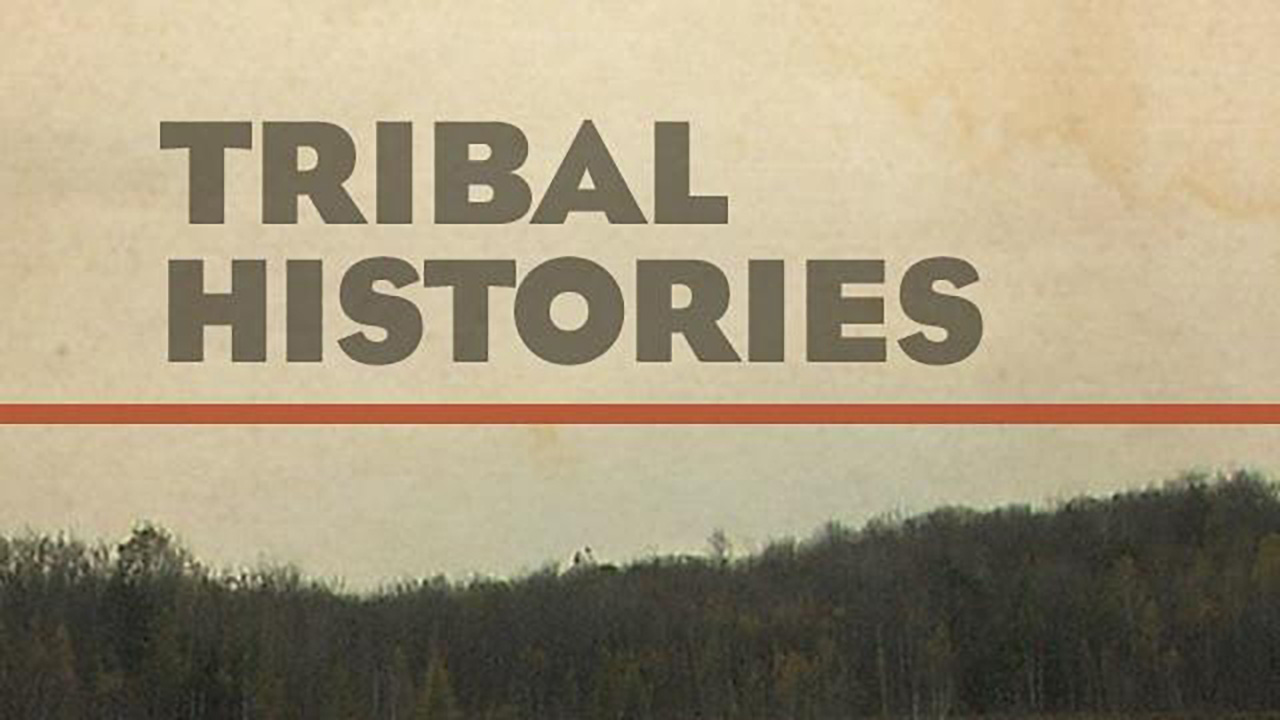
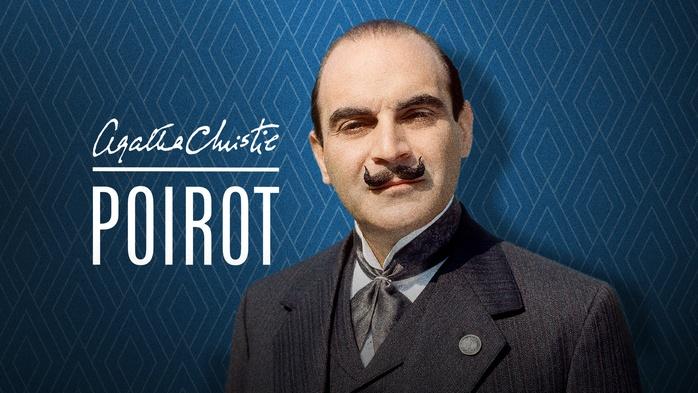

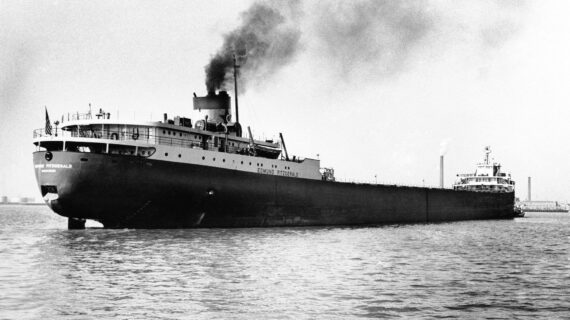


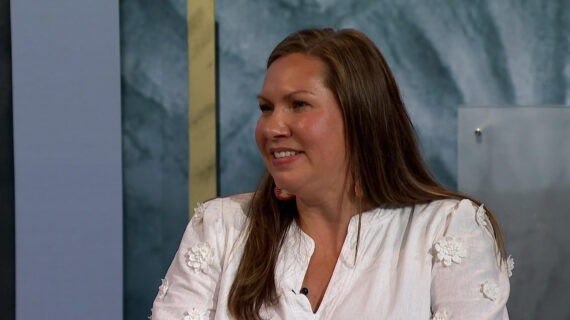
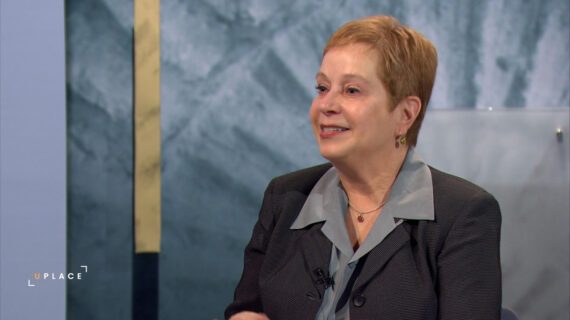
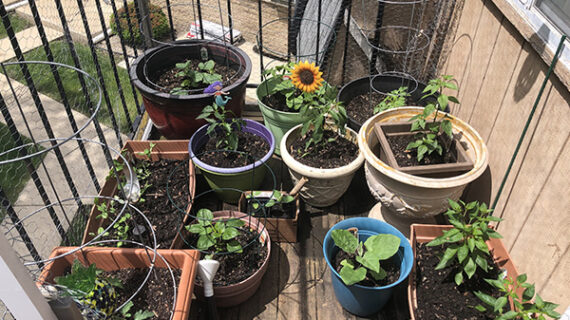
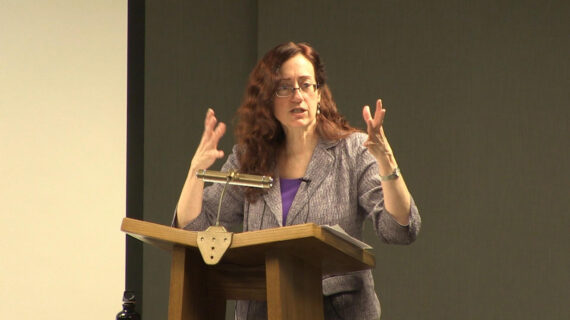
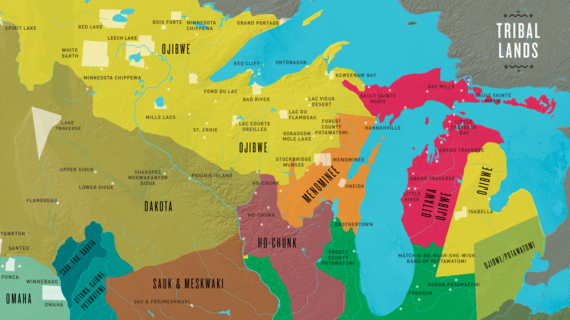
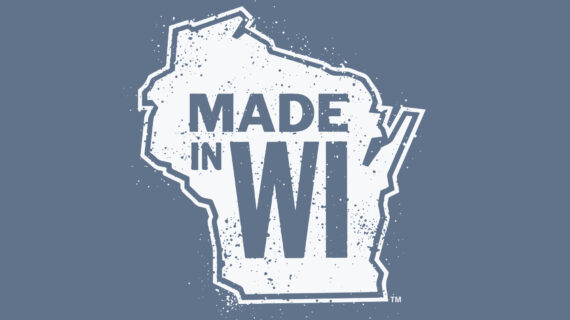
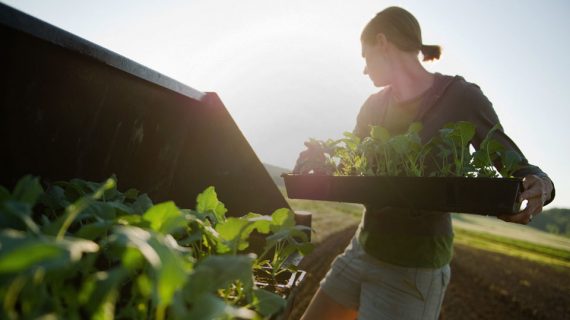
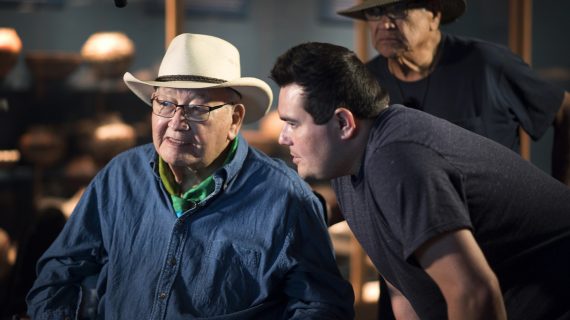


Follow Us